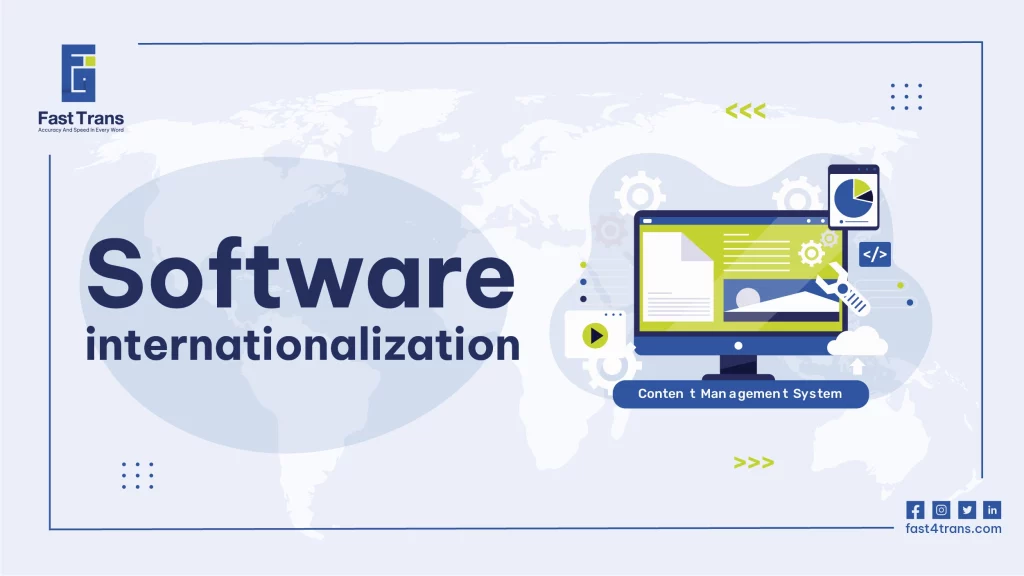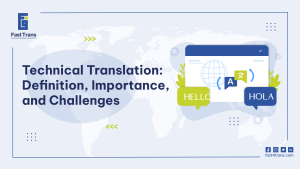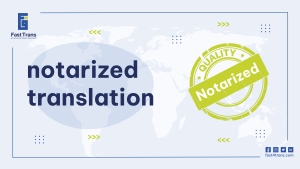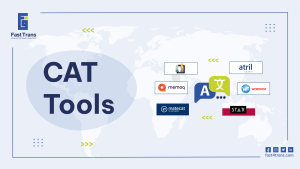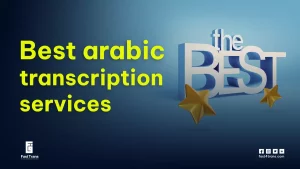Arabic software internationalization is the process of designing software to be easily adaptable for Arabic-speaking regions by ensuring it supports right-to-left text, local date formats, and cultural nuances. Developers lay the groundwork by using placeholders for dynamic translations, ensuring the interface accommodates text expansion, and separating code from content for easier updates.
By planning ahead with frameworks like Angular i18n and testing with native users, companies can create software that seamlessly transitions to Arabic, boosting market reach, user satisfaction, and cultural relevance in the Middle East and North Africa.
What is Arabic software internationalization?
Arabic software internationalization refers to the intentional optimization steps taken by software developers and coders during the design and creation of software to make it ready for localization to the Arabic-speaking market and flexible for Arabic-speaking users, making it adaptable to cultural and regional nuances specific to Arabic-speaking countries.
It is a process that takes place before software localization.
In other words, it is a technical process that establishes a flexible and adaptable software architecture tailored to the needs of Arabic users.
What is Arabic software localization?
Arabic software localization comes after internationalization, and it involves adjusting all textual and non-textual aspects of the user interface to ensure a smooth user experience for Arabic-speaking users. This means providing content in their language, using a familiar tone of voice, and interacting with culturally appropriate symbols and visuals that resonate with them.
This process includes, but is not limited to, adjusting date formatting, currency symbols, size charts, time zones, removing any culturally inappropriate content, considering regional holidays and vacations, modifying design and visuals, and ensuring that numeric values and other elements align with local norms.
Things to consider when you Arabic internationalize your software
When internationalizing software for Arabic, use placeholders to dynamically display translations and ensure proper right-to-left text formatting. Additionally, consider localization for cultural preferences, handle text expansion for UI flexibility, and separate code from content to easily manage Arabic translations.
1. Placeholders
A placeholder is a special set of characters that represent a variable and is replaced by the actual value programmatically.
How so?
When coding, it is extremely important to use placeholders for text. They can search a database of translation files and retrieve them to display the correct language for each user.
Instead of hardcoding each language separately, software internationalization replaces text with placeholders that choose the correct language for the desired users.
For Arabic specifically, placeholders should be adaptable to right-to-left (RTL) languages. This ensures that the text appears properly in the Arabic language, preserving its correct direction and flow. For instance, instead of literally typing a call to action like ‘purchase now’ or ‘buy now,’ the placeholder will retrieve the appropriate Arabic translation and display it based on the user’s language settings.
This can be done through Unicode.
What is a Unicode?
Unicode is a text encoding standard that can represent thousands of characters and symbols across world languages, including those from right to left like Arabic and Hebrew, as well as distinct languages like Chinese and other symbols like emojis.
For Arabic, Unicode ensures that the script, including its special characters and diacritics, is accurately represented in the software interface.
2. Localization
The source code of the software needs to be localized, meaning that it should recognize cultural differences and preferences, by incorporating enough localization data in the source library.
For Arabic, the code needs to account for cultural and linguistic differences, such as using right-to-left text alignment, adapting date formats, and correctly displaying Arabic numerals. It should also consider regional dialects, honorifics, and conventions in addressing users.
The software should pick the right time and date format, numeric formats, time zones, writing systems, and other similar localization details. For example, in the US, the date format is (month-day-year), while in Arabic-speaking regions, it is typically (day-month-year), and it might also incorporate Islamic calendar dates.
Time formats could be different, with Arabic-speaking users favoring a 24-hour format over the 12-hour format used in some Western countries.
3. Text Expansion
One thing to keep in mind is that some languages take up more or less space during translation. The Arabic language, in particular, often uses longer words or phrases than their English counterparts, so the software’s user interface (UI) has to accommodate this text expansion without disrupting the layout.
Ensure the UI elements can stretch or adjust dynamically to fit the Arabic text while maintaining a clean and user-friendly design.
4. Separate Code from Content
All textual files should be externalized and not hardcoded into the source code, including error messages and prompt text, into resource files.
This is especially important for Arabic internationalization, as it allows for easier updates and management of translations. By keeping all text separate from the core code, the Arabic translations can be updated or modified without affecting the underlying functionality, making the software more adaptable to future changes in language or content.
Best 8 tools for Arabic software internationalization
Top tools for Arabic software localization include GNU gettext, Transifex, and Crowdin, which streamline text management and support right-to-left text. These platforms ensure seamless integration of Arabic translations with accurate formatting and cultural context.
1. GNU gettext
GNU is widely used for software internationalization, helping extract text strings from the source code and manage their translations. For Arabic, it ensures proper handling of right-to-left (RTL) text and linguistic nuances.
2. Transifex
Transifex is an online localization tool that also helps in managing translation projects and integrating translations into the software. It supports Arabic and includes features like context-aware translations and RTL support, which are crucial for Arabic localization.
3. Crowdin
Crowdin is an online translation management system that offers essential linguistic features like translation memory, glossaries, and an easy way to handle Arabic translations with special attention to the RTL layout.
4. Lokalise
Similar to Crowdin, Lokalise also offers over-the-air updates (OTA), allowing developers to quickly update translations for Arabic users. It streamlines the process of adapting software for Arabic-speaking regions.
5. Unicode (CLDR)
Unicode provides locale data for various languages and regions, including Arabic-specific formatting for date and time, currency symbols, and other cultural conventions, ensuring proper rendering of Arabic text across different systems.
6. Babel
Babel is a Python library for internationalization and localization, which includes utilities for formatting dates, numbers, and messages according to locale-specific rules. It supports Arabic-specific formatting like the use of Arabic numerals and the correct order of text.
7. Phrase
Phrase is a well-established translation management platform that helps manage localization projects, including Arabic. It offers features like in-context editing, ensuring the proper placement and formatting of Arabic text in the software.
8. OneSky
OneSky is a platform for managing translation and localization projects, providing automated translation suggestions and support for multiple file formats. It supports Arabic translations and ensures proper rendering of text in RTL formats, making it a valuable tool for Arabic software internationalization.
5 Arabic Software Internationalization Best Practices
For successful Arabic software internationalization, focus on designing with localization in mind, ensuring RTL layout compatibility, using frameworks like Angular i18n, leveraging accurate language resources, and respecting cultural nuances for inclusivity. Test with diverse Arabic users to refine user experience and align with regional sensitivities.
1. Design for Localization from the Start
When planning to localize the software for the Arabic-speaking market, it’s crucial to design it in a way that facilitates this process. This includes externalizing text strings and considering factors like text expansion, especially because Arabic words tend to be longer than their English counterparts. Pay attention to right-to-left (RTL) script support and any design elements that may be affected by Arabic text.
2. Testing
Test your software with Arabic-speaking users from various cultural backgrounds to ensure a smooth user experience. Focus particularly on testing the RTL layout, ensuring that text and UI elements align correctly and the flow remains intuitive. Spot potential cultural or linguistic issues, such as mismatched phrases or awkward text placement in the Arabic interface.
3. Use Internationalization Frameworks
Leverage internationalization frameworks and libraries that support Arabic, such as Angular i18n, to save time and ensure consistency. These frameworks can help you handle RTL languages, special characters, and date formats specific to the Arabic-speaking world, simplifying the localization process.
4. Use Language Resources
To maintain consistency across all languages, make sure to use up-to-date language resources, such as glossaries, style guides, and contextual information. For Arabic localization, ensure that you have Arabic-specific glossaries and that the content reflects the cultural nuances of the region. Regular updates to these resources help ensure a uniform user experience.
5. Make it Inclusive and Culturally Appropriate
The ultimate goal of internationalization and localization is to enhance the user experience. When localizing for the Arabic-speaking audience, consider cultural sensitivities and ensure the software is inclusive. Think about the different age groups, gender considerations, and whether the software is accessible to people with disabilities. Additionally, ensure the design adheres to cultural norms, avoiding anything that could be considered inappropriate in Arab societies.
Work closely with linguistic experts and native Arabic speakers who can guide you through the localization process, ensuring that you respect local customs, values, and language subtleties.
Pro Tip: Avoid embedding text directly into images. Instead of hard-coding text into images, use text overlays that can be easily translated for each language. This makes it simpler to localize the content for Arabic and other languages, without having to modify individual images each time.
Benefits of Arabic software internationalization
Arabic software internationalization enhances localization efficiency, opening doors to new markets and boosting brand trust in the MENA region. It provides a competitive edge and increases customer satisfaction through culturally adapted software.
1. Streamlining Localization
Arabic software internationalization, as a prerequisite process, helps streamline and improve the localization workflow among team members (developers/linguists), making it easier to adapt software for Arabic-speaking users.
2. Tap into New Markets
By internationalizing and localizing your software for the Arabic language, your business can reach new markets, users, and audiences in the Arab world, which leads to increased revenue and expansion of your customer base. Successful examples of companies that have capitalized on Arabic localization include Adobe, Facebook, MS Office, and WordPress.
3. Competitive Advantage
In competitive markets, where many businesses offer similar products, supporting Arabic language localization helps you stand out and surpass competitors by offering your product in a language spoken by millions across the Middle East and North Africa (MENA) region.
4. Brand Trust & User Satisfaction
Committing to Arabic accessibility builds trust in the MENA region and strengthens your brand’s image in international markets. Additionally, Arabic-speaking users feel more comfortable interacting with software that communicates in a familiar tone and culturally appropriate design, leading to higher user satisfaction.
What is globalization vs internationalization software?
We’ve so far tackled the difference between software internationalization, and software localization. But sometimes you’ll stumble on the term ‘software globalization.
How is it different from software internationalization?
Software Internationalization | Software Globalization |
| (i18n) | (g11n) |
| Internationalization is the design process of software that establishes a flexible software infrastructure that streamlines localization as a result. It makes the software adaptable and flexible to different languages without making changes to the source code. | Globalization is a broader term that includes both internationalization and localization. It encompasses not just the technical aspects of software design but also is inclusive of cultural aspects ‘worldwide’. |
you might be interested in the difference between globalization and localization
Software Internationalization terminologies
- Localization (l10n): culturally adapting software for a specific language and region.
- Internationalization (i18n): Designing software to make it flexible for localization and easy adaptation to different languages.
- Unicode: A character encoding standard that supports thousands of characters that encompass all major languages, and other symbols like emojis.
- Resource file: Text content stored outside the source code.
- Machine Translation (MT): Automated translation by the use of machine learning algorithms.
- Textual Placeholders: In text-based formats like strings represented by symbols.
Arabic Software internationalization is Easy with Fast trans
That being said, Fast Trans as a certified translation company is there to help you localize any sort of medium for your business. Whether it is software internationalization and localization, or website and application localization.
Our team of translators has decades of experience with top clients in the Middle East and worldwide, working with hugely diverse types of documents, delivering tight deadlines, and breaking through the translation market at a very competitive price.
Conclusion
Arabic software internationalization is the process of designing software to be flexible and adaptable for Arabic-speaking regions, enabling smooth localization. It involves preparing the code, adjusting to cultural preferences, and ensuring the software supports key aspects like right-to-left text formatting, local date and time conventions, and numeric symbols. By setting up a framework that accommodates these requirements from the start, developers can streamline the process of adapting the software to Arabic, improving its accessibility and ensuring it resonates with regional users.
Key considerations include using placeholders for dynamic text translation, ensuring that text expansion doesn’t disrupt the user interface, and separating code from content to simplify updates. Additionally, testing the software with Arabic-speaking users and using internationalization frameworks like Angular i18n are vital to ensure consistency. Ultimately, internationalization enhances the software’s ability to scale across different languages and cultures, making it more competitive in the Arabic market while improving user satisfaction through culturally appropriate design.

